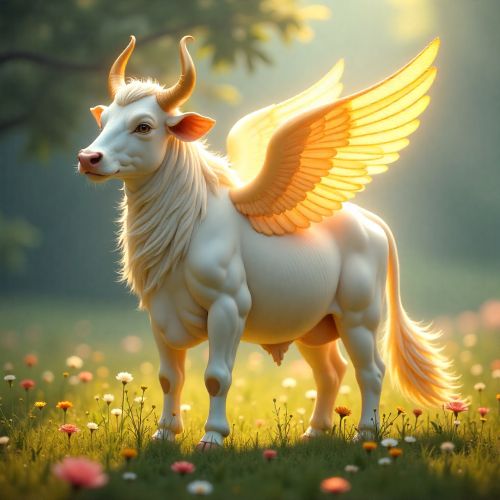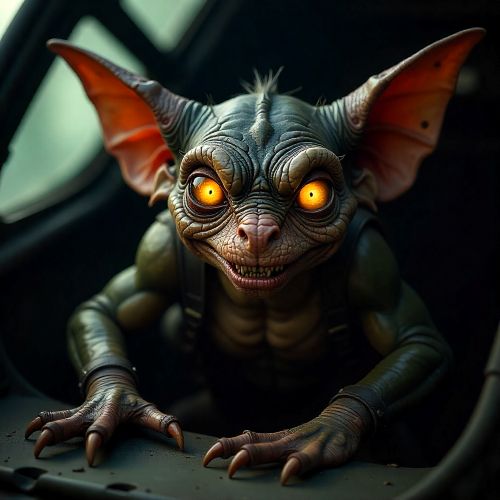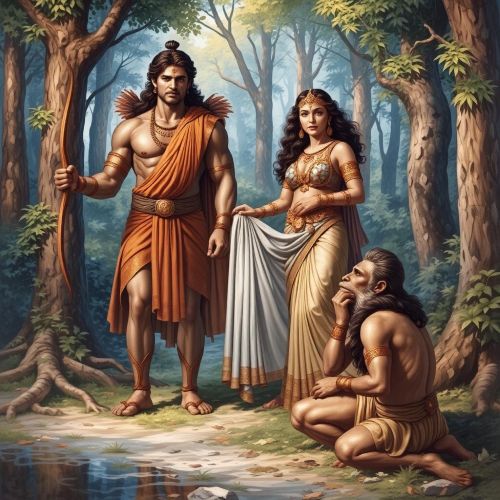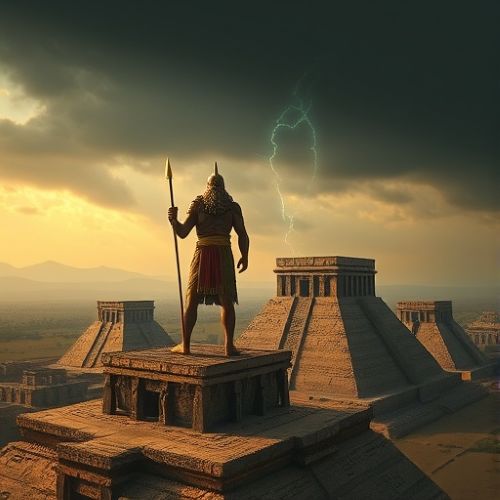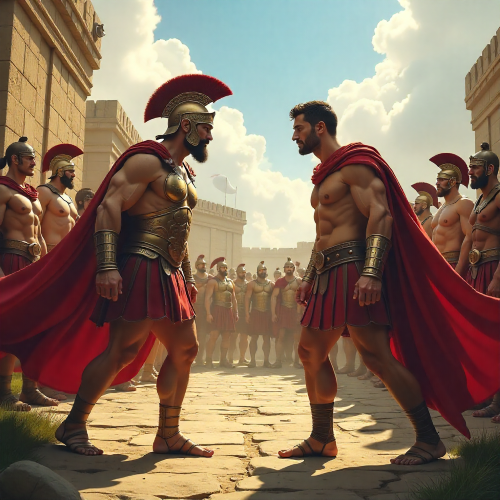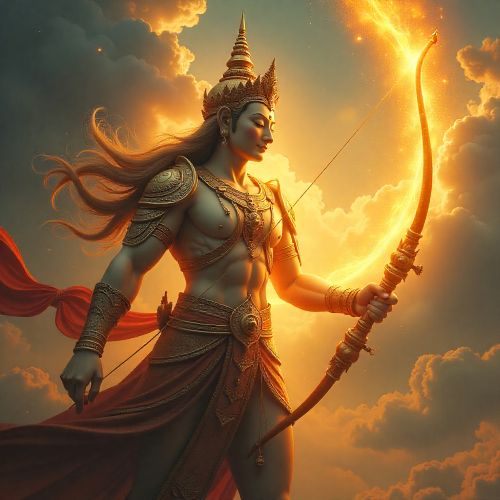Mahabharata : India’s Greatest Epic of Duty and Destiny
Listen
At a glance
| Attribute | Description |
|---|---|
| Mythology | Indian Mythology |
| Language Written | Sanskrit |
| Age | 400 BCE – 400 CE |
| Author | Sage Vyasa |
| Main Characters | Krishna, Arjuna, Yudhishthira, Duryodhana, Draupadi |
Mahabharata
Introduction
The Mahabharata stands as one of the greatest achievements of Indian literature, a vast Sanskrit epic that continues to shape the cultural and spiritual imagination of the Indian subcontinent. With more than 100,000 verses, it is the longest epic poem in the world and a reservoir of mythological wisdom, historical reflection, and philosophical insight. At its heart lies the struggle between the Pandavas and the Kauravas, two branches of the Kuru dynasty whose rivalry leads to the catastrophic Battle of Kurukshetra. Yet the Mahabharata goes far beyond recounting a royal feud—it explores the deeper questions of duty, justice, faith, and human morality, making it a timeless guide for understanding life and the choices that define it.
Historical Background
The origins of the Mahabharata can be traced to ancient oral traditions that likely developed over several centuries before being committed to writing. The final compilation, traditionally credited to the sage Vyasa, is believed to have taken shape between 400 BCE and 400 CE. Its core narrative may have evolved from earlier accounts of conflicts among Vedic clans, gradually enriched by philosophical teachings, stories of sages, and spiritual discourses. As Indian society transitioned from Vedic ritualism toward more diverse religious expressions—including early Hinduism, Buddhism, and Jainism—the epic absorbed these evolving ideas. This slow organic growth allowed the text to become a living archive of ancient Indian wisdom, capturing the political, ethical, and spiritual currents of its time.
Synopsis & Themes
The central story of the Mahabharata revolves around the royal house of Hastinapura, where the rightful succession becomes entangled in jealousy, betrayal, and fate. The Pandavas, known for their adherence to truth and justice, are repeatedly wronged by the Kauravas, whose leader Duryodhana is driven by resentment and ambition. Events escalate after a rigged game of dice forces the Pandavas into exile, ultimately setting the stage for the Kurukshetra War.
Throughout this expansive narrative, the Mahabharata examines the tension between human duty and personal emotion. The Bhagavad Gita, delivered by Krishna to Arjuna on the battlefield, serves as a philosophical anchor that addresses the nature of righteousness, the immortality of the soul, and the necessity of fulfilling one’s dharma even in moments of deep inner conflict. Themes of karma, loyalty, justice, and destiny run consistently throughout the epic, illustrating how every action carries far-reaching consequences. The Mahabharata ultimately portrays human life as a complex moral journey, full of difficult choices and inevitable uncertainties.
Key Characters
The Mahabharata is remarkable for its vast and nuanced cast, each character embodying different virtues, flaws, and destinies. At the forefront is Krishna, the divine strategist and spiritual guide whose presence shapes the course of events and offers insight into cosmic truth. Arjuna stands as the conflicted warrior torn between compassion and duty, while Yudhishthira represents unwavering commitment to righteousness, even at personal cost. Bhima, with his strength and loyalty, and the twins Nakula and Sahadeva, with their discipline and knowledge, complete the Pandava lineage.
Draupadi emerges as a powerful figure whose ordeal becomes one of the catalysts for the war, symbolizing both resilience and the demand for justice. On the opposing side, Duryodhana personifies pride and grievance, while his ally Karna embodies tragedy—a noble warrior constrained by loyalty and circumstance. Figures like Bhishma, Drona, Gandhari, and Dhritarashtra contribute profound emotional and moral depth, making the epic a study of the full spectrum of human experience.
Cultural & Religious Significance
The Mahabharata is revered not only as an epic tale but as a cornerstone of Indian spiritual and cultural identity. Described as an itihasa—a record of “what happened”—it blends mythology with historical memory, shaping the ethical and philosophical foundation of Indian society. Its exploration of the four purusharthas—dharma, artha, kama, and moksha—provides a comprehensive framework for understanding human purpose and fulfillment.
The Bhagavad Gita, situated within the epic, holds a central place in Indian religious thought and is studied worldwide for its insights into yoga, duty, and self-realization. Beyond scripture, the Mahabharata influences dance, music, theater, temple art, storytelling traditions, and contemporary life. Its characters are invoked in rituals and festivals, and its moral lessons continue to guide generations. The epic’s famous declaration—“What is found here may be found elsewhere; what is not found here will not be found anywhere”—speaks to its encyclopedic breadth and universal relevance.
Modern Adaptations
In modern times, the Mahabharata has found new life in literature, performance, cinema, and digital media. B.R. Chopra’s iconic 1988 television adaptation introduced the epic to millions in a resonant visual form, while contemporary series and films continue to reinterpret its stories for new audiences. Writers across the world have produced retellings that explore alternative perspectives, giving voice to figures such as Draupadi, Karna, and Bhishma.
The epic has also inspired major theatrical productions, including Peter Brook’s internationally acclaimed stage play, which brought the narrative to a global audience through an intercultural lens. Classical dances such as Kathakali, Bharatanatyam, and Odissi frequently portray episodes from the Mahabharata, preserving its stories through traditional aesthetics. In contemporary popular culture—video games, graphic novels, novels, and web series—the Mahabharata remains an inexhaustible source of creativity and philosophical inquiry.
Source
Britannica. (2025, October 27). Mahabharata | Definition, story, history, & facts. Encyclopaedia Britannica. https://www.britannica.com/topic/Mahabharata
Research Starters. (2018, December 31). The Mahabharata by Unknown. Ebsco. https://www.ebsco.com/research-starters/literature-and-writing/mahabharata-unknown
Wisdom Library. Historical context of Mahābhārata. https://www.wisdomlib.org/hinduism/essay/samkhya-thoughts-in-the-mahabharata/d/doc1210259.html
SuperSummary. (2025, September 9). Mahabharata summary. https://www.supersummary.com/mahabharata/summary/
Devdutt Pattanaik. (2023, November 22). What history and archaeology tell us about the Mahabharata. Devdutt.com. https://devdutt.com/what-history-and-archaeology-tell-us-about-the-mahabharata/
IJHSSM. The Mahabharata: Mythology or historical reality? https://ijhssm.org/issue_dcp/The%20Mahabharata%20Mythology%20or%20Historical%20Reality%20%20An%20%20Exploration%20of%20Ancient%2…
World History Encyclopedia. (2016, August 24). Mahabharata. https://www.worldhistory.org/Mahabharata/
Review of Contemporary Philosophy. (2024, July 1). An exploration into the historical actuality of Mahabharata. https://www.reviewofconphil.com/index.php/journal/article/view/111
Frequently Asked Questions
What is the main story of the Mahabharata?
It recounts the conflict between the Pandavas and Kauravas, culminating in the Kurukshetra War and exploring themes of duty, fate, and morality.
Who wrote the Mahabharata?
The epic is traditionally attributed to the sage Vyasa, who is also featured as a character within the narrative.
What is the significance of the Bhagavad Gita in the Mahabharata?
The Bhagavad Gita is a spiritual discourse given by Krishna to Arjuna, offering philosophical guidance on duty, self-realization, and righteousness.
How old is the Mahabharata?
Its composition occurred between 400 BCE and 400 CE, though its oral traditions are much older.
Why is the Mahabharata important in Indian culture?
It influences religious practices, ethical thought, arts, literature, and social values, making it central to Indian cultural identity.



